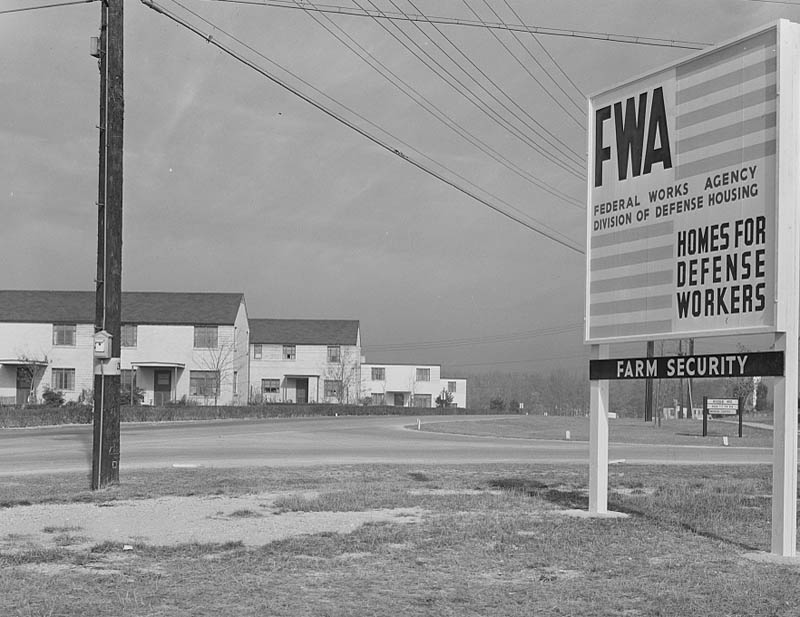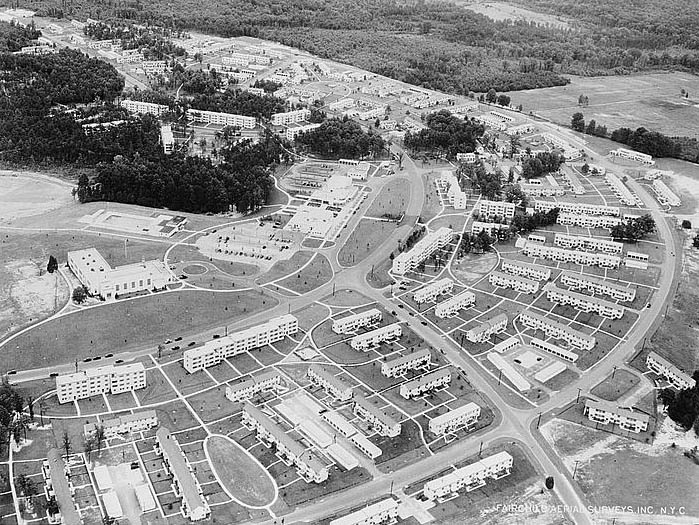Pushing east across the Potomac Basin, just before reaching Washington D.C., Highway 50 brushes past Greenbelt, Maryland, one of three original Greenbelt project towns instituted by the New Deal’s Federal Resettlement Agency. Initiated as Maryland Special Project #1, the 1935 federally-planned and developed suburb, a social engineering experiment, became the primary template of private suburban development for decades to come. Conceived as a collectivist utopia by Undersecretary of Agriculture Rexford Tugwell, whose methods earned him the nickname “Rex the Red” among his critics, the government planned these colonies from a top-down approach in an effort to overcome the urban experience’s growing economic and psychic despair.
1939 – “The City” documentary contrasts urban life to the planned suburb of Greenbelt, MD
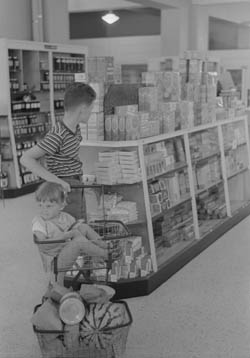
Greenbelt employed the concept of landscape and architecture as a means of social engineering, a process pioneered in the 1920’s by the Regional Planning Association of America. The road system within Greenbelt focused on auto-commuting and safety, featuring three-way intersections, cul-de-sacs, and pedestrian undercrossings. The citizens of Greenbelt formed several co-ops, communally organizing a credit union, supermarket, and gas station during Greenbelt’s first few years. In the Greenbelt model, urban planners saw the highway’s potential for settlement decentralization decades before the Interstate Highway System patented the process. Increased automobility allowed for longer commutes between home and work while eschewing the need for public transit infrastructure. Rural land proximate to cities could be purchased wholesale, subdivided into affordable individual lots, and sold to families seeking to escape congested and polluted cities. The utopian visions inspired by the Greenbelt model promoted suburban dreams, albeit not according to morally-agnostic platforms; future developers, real estate agencies, and banks applied racially discriminatory policies in determining who would participate in these dreams.
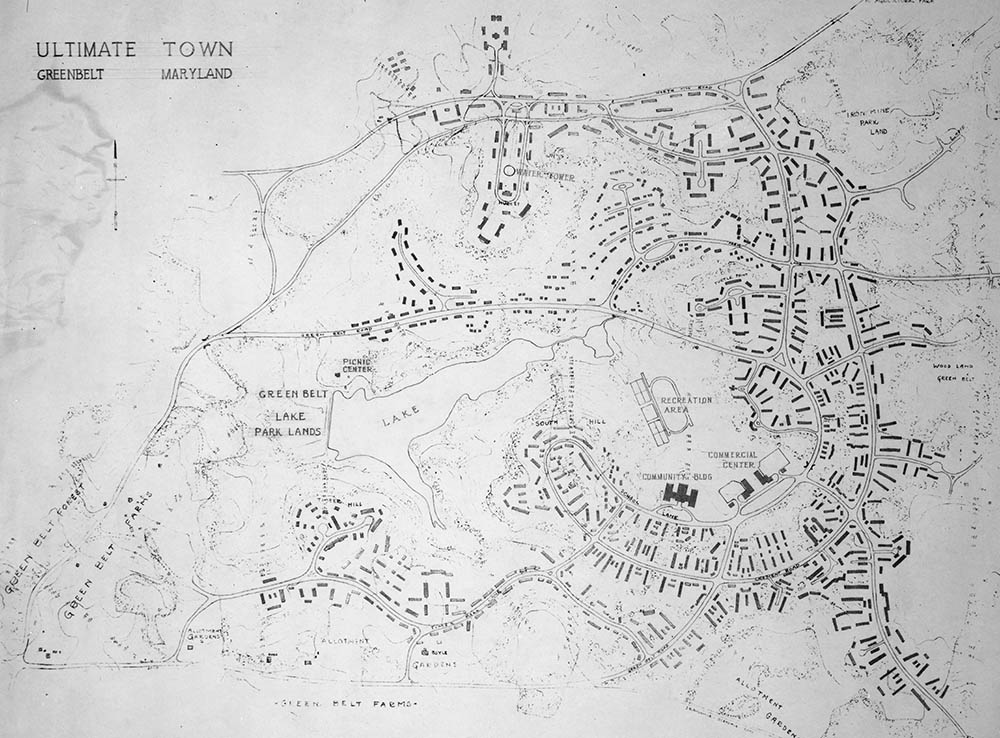
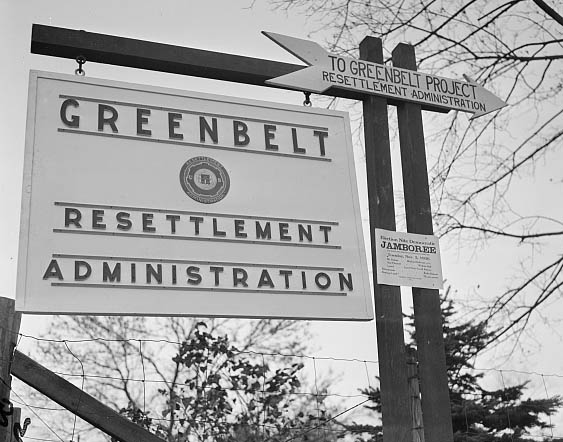
During the second Red Scare of the 1950’s, the collectivist-inspired Greenbelt towns came under suspicion of socialist influence, later falling prey to private development efforts following a real estate boom in the wake of nearby expressway expansion. Despite being considered a policy failure by many, the Greenbelt experiment profoundly influenced the private market’s future dominant landscape of American residential development, the suburb. Despite suburbia’s well-earned reputation for unsustainability, sprawl, dependency on fossil fuels, and role as an unnatural extension of racial housing biases of the 1950’s, individuals from both urban and rural areas are today united in their desire (over 50 percent in both cases) to relocate to the suburbs, maintaining a decades-long trend.
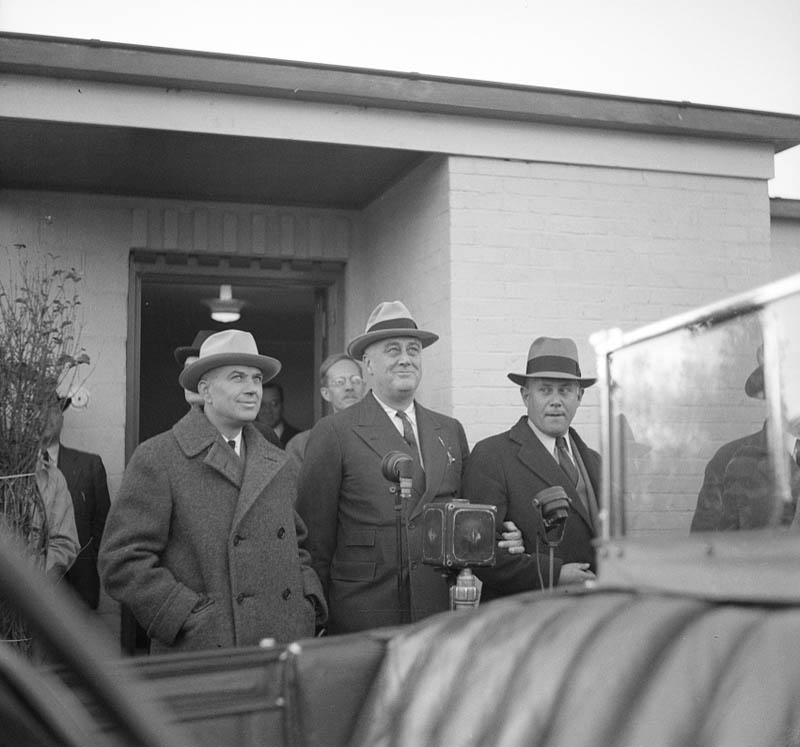
The Greenbelt experiment was just one of a litany of New Deal projects involving the National Highway System. The Great Depression and concurrent Dust Bowl of the 1930’s saw millions of Americans displaced by perilous financial and environmental conditions. Unlike earlier depressions and recessions, the highway system allowed common Americans of the 1930’s unprecedented freedom to migrate out of their economic circumstances. Millions of rural residents migrated into cities in this era, a process famously depicted in John Steinbeck’s The Grapes of Wrath, while the Works Progress Administration (WPA) brought millions of workers out of urban breadlines and into small towns and federal lands to build base infrastructure, schools, libraries, armories, and roads throughout the United States. Between 1935-43, the WPA built or reconstructed 651,087 miles of roads, 88 percent of which were classified as rural.
The WPA also employed writers who journeyed across the United States authoring travel guidebooks highlighting American culture. Each book was written according to a government-issued style guide and defined the national imagination for thousands of future tourists.
